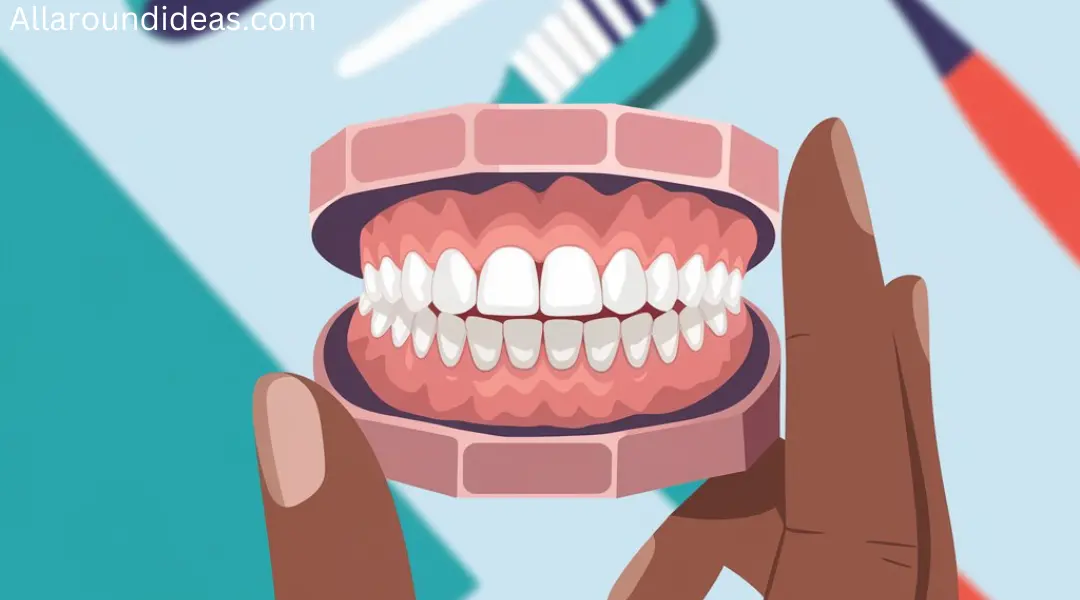Introduction
Dental veneers have become a popular cosmetic dental solution for individuals looking to enhance their smiles. These thin, custom-made shells of tooth-colored materials are designed to cover the front surface of teeth, improving their appearance in terms of color, shape, size, and length. While the aesthetic benefits are clear, many people wonder about the cost associated with getting veneers. In this article, we will explore the different factors and tell you that how much do veneers cost, the types of veneers available, and what you can expect in terms of overall cost.

If you want some more information about How Brashears Business Started then checkout our last blog post.
Understanding Dental Veneers
What Are Veneers?
Veneers are ultra-thin shells, typically made from porcelain or composite resin, that are bonded to the front of the teeth. They are used to address various dental concerns, such as:
- Stained Teeth: Veneers can cover discoloration that does not respond to whitening treatments.
- Chipped or Worn Teeth: They can restore the appearance of damaged teeth.
- Misaligned or Irregularly Shaped Teeth: Veneers can create a more uniform smile.
- Gaps Between Teeth: They can close small gaps for a more cohesive look.
Types of Veneers
There are two main types of veneers: porcelain and composite resin.
- Porcelain Veneers: Made from high-quality ceramic, porcelain veneers are durable and stain-resistant. They closely mimic the natural appearance of teeth and are often preferred for their longevity and aesthetic appeal. However, they are typically more expensive than composite veneers.
- Composite Resin Veneers: These are made from a tooth-colored resin material that is applied directly to the teeth. While they are generally more affordable, they may not last as long as porcelain veneers and may be more prone to staining.
Factors Influencing the Cost of Veneers
The cost of veneers can vary widely based on several factors:
1. Type of Veneer
As mentioned, the type of veneer plays a significant role in determining the price. Porcelain veneers typically cost more than composite veneers due to their durability, aesthetic qualities, and the labor-intensive process required to create them.
If you want some more information about How Brashears Business Started then checkout our last blog post.
2. Geographic Location
The cost of dental procedures, including veneers, can vary significantly depending on where you live. Urban areas and regions with a higher cost of living tend to have higher dental fees. For instance, getting veneers in cities like New York or Los Angeles may cost more than in smaller towns or rural areas.
3. Dentist’s Experience and Reputation
The dentist’s experience, training, and reputation can also influence the cost. Highly experienced cosmetic dentists may charge more for their services, but this often comes with the benefit of better outcomes and a higher level of care.
4. Number of Veneers Needed
The total cost will also depend on how many veneers you plan to get. While some people may only need one or two veneers to address specific issues, others may opt for a full set of veneers to achieve a complete smile makeover.
5. Additional Treatments
Before getting veneers, some individuals may require additional dental work, such as teeth whitening, gum contouring, or orthodontic treatments. These procedures can add to the overall cost of getting veneers.

Cost Breakdown
Average Cost of Veneers
The cost of veneers can range significantly based on the factors mentioned above. Here’s a general breakdown:
If you want some more information about How Brashears Business Started then checkout our last blog post.
- Porcelain Veneers: Typically range from $900 to $2,500 per tooth.
- Composite Resin Veneers: Usually cost between $250 and $1,500 per tooth.
Example Scenarios
- Single Porcelain Veneer: If you need just one porcelain veneer, you might expect to pay around $1,200 on average.
- Multiple Porcelain Veneers: For a set of six porcelain veneers, the total cost could range from $5,400 to $15,000.
- Single Composite Resin Veneer: A single composite veneer might cost around $500.
- Multiple Composite Resin Veneers: For six composite veneers, expect to pay between $1,500 and $9,000.
Payment Options and Insurance
Dental insurance typically does not cover veneers, as they are considered cosmetic procedures. However, some dental offices offer financing options or payment plans to help manage the cost. It’s advisable to discuss payment options with your dentist’s office during your consultation.
The Process of Getting Veneers
Consultation
The first step in the veneer process is a consultation with a cosmetic dentist. During this visit, the dentist will evaluate your oral health, discuss your goals, and create a personalized treatment plan. This may include taking X-rays and impressions of your teeth.
Preparation
Once you and your dentist decide on the treatment plan, the next step is preparing your teeth for the veneers. For porcelain veneers, a small amount of enamel will be removed from the front of the teeth to ensure a proper fit. This process typically requires local anesthesia for comfort.
Temporary Veneers
In many cases, your dentist may place temporary veneers while your permanent ones are being fabricated in a dental laboratory. This process usually takes a couple of weeks.
Bonding
Once your permanent veneers are ready, you will return to the dentist’s office for bonding. The dentist will check the fit and color of the veneers before permanently attaching them to your teeth using a strong dental adhesive. This process is usually completed in one appointment.
If you want some more information about How Brashears Business Started then checkout our last blog post.
Benefits of Veneers
Despite the costs associated with getting veneers, many patients find the investment worthwhile. Here are some key benefits:
- Enhanced Appearance: Veneers can dramatically improve the look of your smile, boosting confidence.
- Stain Resistance: Porcelain veneers are resistant to staining, allowing for a bright, white smile that lasts.
- Natural Look: Veneers are designed to mimic the appearance of natural teeth, providing a seamless integration into your smile.
- Durability: With proper care, porcelain veneers can last for a decade or more.
Maintenance and Care
Maintaining veneers is similar to caring for natural teeth. Here are some tips:
- Regular Dental Check-ups: Keep up with routine dental visits for professional cleanings and evaluations.
- Good Oral Hygiene: Brush and floss regularly to maintain gum health and the integrity of the veneers.
- Avoid Hard Foods: Be cautious when biting into hard foods, as this can damage the veneers.
- Limit Staining Agents: While porcelain veneers are stain-resistant, it’s wise to limit the consumption of foods and drinks that can stain, such as coffee, tea, and red wine.

Conclusion
In summary, the cost of dental veneers can vary widely, typically ranging from $250 to $2,500 per tooth, depending on factors such as the type of veneer, geographic location, and the number of veneers needed. While the initial investment may seem significant, many individuals find that the aesthetic and psychological benefits of a beautiful smile far outweigh the costs.
If you want some more information about How Brashears Business Started then checkout our last blog post.
If you’re considering veneers, it’s essential to consult with a qualified cosmetic dentist who can provide personalized recommendations based on your specific needs. With the right care and maintenance, veneers can be a long-lasting solution that enhances your smile and boosts your confidence for years to come.


